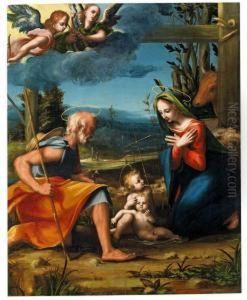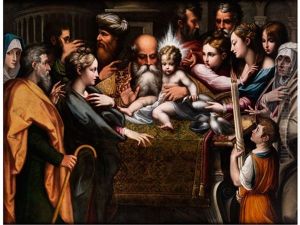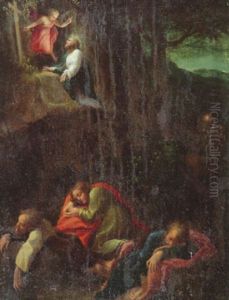Francesco Maria Rondani Paintings
Francesco Maria Rondani, born in 1490 in Parma, Italy, was an Italian painter active during the Renaissance period. Although not as widely recognized as some of his contemporaries, Rondani played a significant role in the development of Parma's artistic landscape, contributing to the spread of Renaissance ideals and aesthetics in Northern Italy. His work, characterized by delicate coloration and graceful figures, reflects the transition from the High Renaissance to the Mannerist style.
Rondani was a student of the prominent painter and architect Giulio Romano, and his style was heavily influenced by his mentor as well as by the works of Correggio, another towering figure of the Italian Renaissance whose works were pivotal in the evolution of the Parma school of painting. Rondani's collaboration with Correggio on several projects, including the fresco decoration of the Church of San Giovanni Evangelista in Parma, is a testament to his skills and the high regard in which he was held by his peers.
Throughout his career, Rondani worked on various religious and secular commissions, producing altarpieces, frescoes, and portraits that were celebrated for their vivacity and emotional depth. One of his most notable works is the decoration of the apse and dome of the Parma Cathedral, where his frescoes display a remarkable understanding of spatial composition and narrative depth. Despite the challenges of competing with the burgeoning Mannerist style, Rondani's work remained rooted in the naturalistic and harmonious ideals of the Renaissance.
Rondani's influence extended beyond his immediate contributions to the Parma Cathedral and other local churches; his style and techniques were disseminated through his students and followers, ensuring the continuation of his artistic legacy. He died in 1550 in Parma, leaving behind a body of work that, while perhaps overshadowed by that of his more famous contemporaries, played a crucial role in the cultural and artistic history of the region. Through his dedication to the principles of the Renaissance and his adaptation of emerging styles, Francesco Maria Rondani exemplifies the dynamic and evolving nature of Italian art during one of its most celebrated periods.






